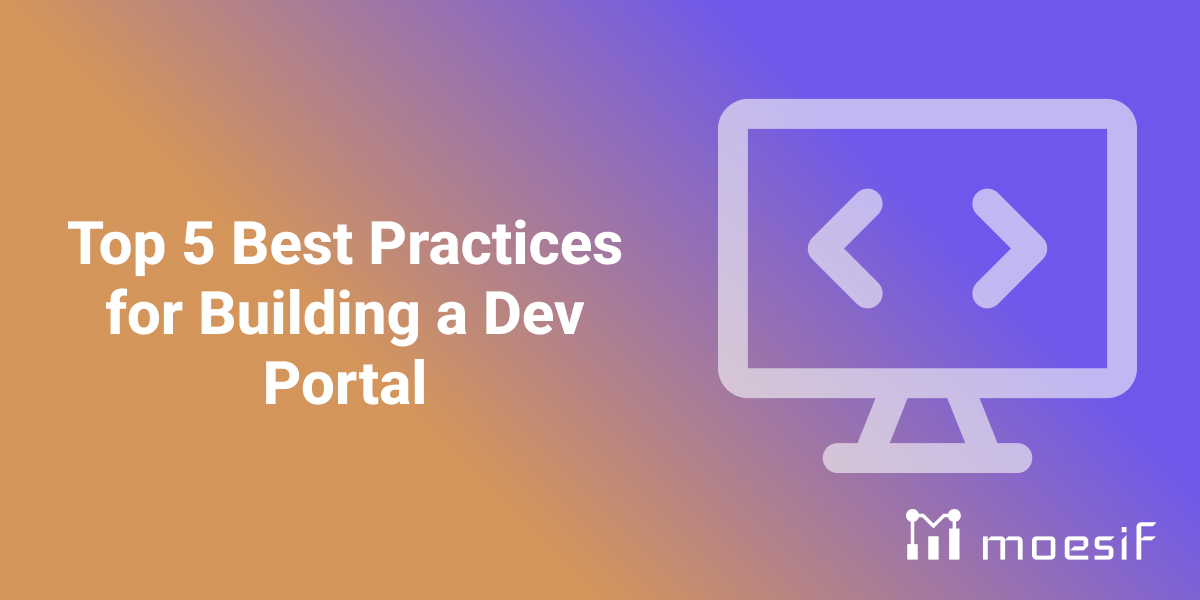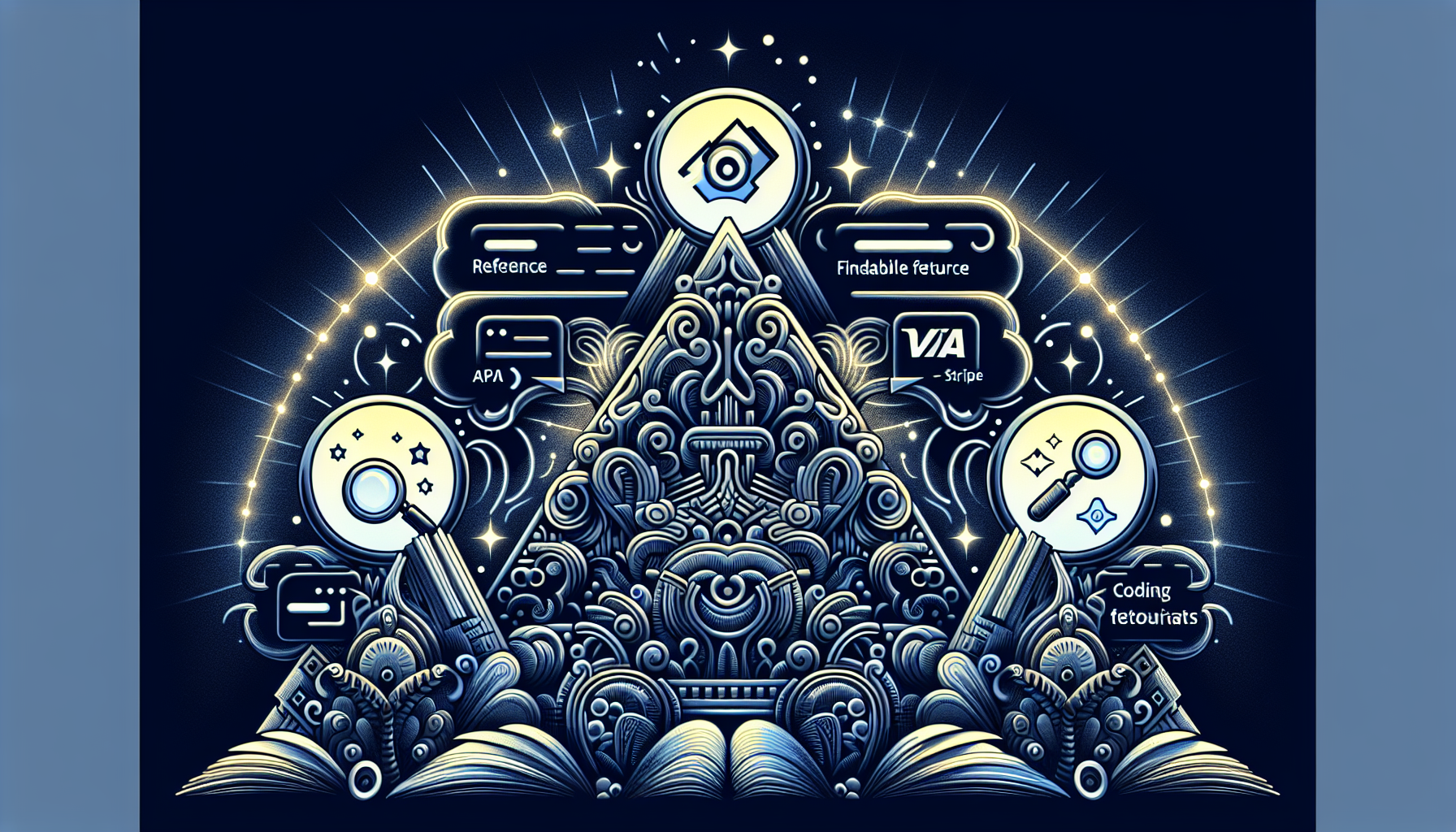Top 5 Best Practices for Building a Dev Portal

A developer portal works as a centralized hub for accessing, managing, and integrating APIs. It supports developers with the tools, documentation, and support they need to succeed. In this article, you’ll learn the top five best practices for creating a dev portal that developers love.

Table of Contents
- Key Takeaways
- Understanding the Importance of a Developer Portal
- Key Features of an Effective Developer Portal
- Customizing Your Developer Portal
- Best Practices for Developer Portal Content
- Enhancing Community Engagement
- Case Studies of Successful Developer Portals
- Future Trends in Developer Portals
- Summary
Key Takeaways
-
Developer portals consolidate documentation, tools, and support in one place. They simplify the integration process and improve developer experience by a huge margin.
-
Key features of effective developer portals include comprehensive documentation, interactive API explorers, and code samples or SDKs.
-
Future trends in developer portals involve the integration of generative AI and Large Language Models (LLMs). These will bring more productivity and task automation features, alongside continuous emphasis on content security and analytics.
Understanding the Importance of a Developer Portal

A developer portal acts as the central hub for accessing and managing APIs. It provides all the necessary tools and resources that developers need for successful integration. A dev portal consolidates documentation, tools, and support in one place. Therefore, the integration process that comes with building an application or feature, becomes a lot easier. It also allows developers to easily experiment and implement APIs. The advantages of using a developer portal include:
-
Consolidated documentation, tools, and support.
-
Streamlined integration process.
-
Ability to test APIs in sandbox environments without affecting live systems.
-
Enhanced developer experience.
A well-designed developer portal can drastically improve the user experience, leading to higher adoption rates and successful integration stories. These portals have a vast amount or support and community resources. These resources are indispensable for modern API ecosystems in troubleshooting and knowledge sharing while crafting meaningful software.
In essence, we may mistakenly take dev portals for granted in thinking that they only provide access to APIs. But their scope and potential results in a seamless and engaging experience that encourages developers to innovate and build effectively.
Key Features of an Effective Developer Portal

If you want to build developer portal solutions that truly serve their purposes, you must incorporate key features that cater to the needs of developers. Fundamental aspects that make a developer portal effective and user-friendly include the following:
-
Comprehensive documentation
-
Interactive API explorers
-
Code samples and SDKs
Each of these features plays a unique role in enhancing the overall developer experience.
Comprehensive Documentation
Comprehensive documentation, including reference documentation, acts as a detailed guide for developers to understand and use APIs effectively. This documentation follow a logical structure so that users can easily navigate and find the information they need quickly. Documentation should also include examples to explain the structure of API calls and responses.
To further improve usability and accessibility, implement advanced search and filtering options. It allows developers to narrow down their searches based on specific criteria.
Interactive API Explorer
An interactive API explorer is a vital component of an effective developer portal. It enables developers to:
-
Test and interact with APIs in real time using their API key or managing multiple API keys.
-
Make API calls.
-
Play with query parameters.
-
See immediate responses without writing any code.
This feature essentially provides a self-service experience for developers. It gives more room for experimentation and raises engagement.
A product can strongly showcase its features and capabilities to potential users through elements like “Try it out” and sandbox environments. Both of these features include API explorer as well as other interactive elements that give hands-on experience with the product.
Code Samples and SDKs
Developer portals also provide code samples and SDKs in various programming languages. These developer resources eliminate the need for developers to rewrite code in different languages. Integration becomes more seamless. It also greatly raises adoption rates as more developers can try out and adopt the product, no matter their backgrounds and use cases.
Customizing Your Developer Portal

For a personalized experience that aligns with your brand and meets specific user needs, you have to customize your developer portal. Personalizing the appearance, functionality, and user access management can greatly impact how useful your users will find the dev portal.
This section explores various customization options available for developer portals.
Visual Customization
Visual customization ensures that the developer portal reflects the company’s branding and provides an intuitive navigation experience. A consistent design promotes usability and supports the user journey, reinforcing the overall brand identity. A good visual design and implementation doesn’t have harm user experience while trying to fit visual appeal and brand authority.
Tools like Apigee allow for customization of themes, colors, and other visual aspects to align the portal with the company’s branding.
Functional Customization
Functional customization tailors the portal features and layouts to specific business needs. This makes sure that every consumer finds it relevant and useful for their use cases. With tools like Apigee, you can modify pre-provisioned pages, add new content areas, and customize page layouts to better serve your users.
If you want to create a portal that achieves complete functionality while aligning with your business objectives, pay attention to functional customization.
User Access Management
User access management is very important as it controls visibility, permissions, and authentication within the developer portal. Some key aspects of user access management include:
-
Providing self-service registration options.
-
Managing user accounts through roles and access controls.
-
Ensuring secure and organized access to portal content.
By implementing these practices, you can effectively control user access and enhance the security of your developer portal.
Apigee’s role-based authorization model is an excellent example of how to manage developer access and permissions effectively for API products.
Best Practices for Developer Portal Content
If you adhere to best practices that ensure clarity, usability, and engagement, you can create high-quality content for your developer portal. This section covers some of these best practices and key strategies.
Layered Content Architecture
A layered content architecture organizes information logically. It can cater to various user profiles from non-technical to highly technical. This structure helps users understand the value of services by providing business details at the top layer and technical details at the bottom layer.
If you want to support API adoption for all user levels, provide clear and detailed tutorials for different user skill levels.
Onboarding Processes
A frictionless onboarding process can keep prospective users engaged. Consider including “Quickstart” guides and “Get started” tutorials that focus on simple use cases. These extremely helps new users perform their first API call quickly and understand the solution from start to finish. This approach minimizes friction and encourages users to explore further.
Regular Updates and Maintenance
Regular updates and maintenance signal reliability and trustworthiness to users. Keeping the developer portal up-to-date requires collaboration across the organization, ensuring that all teams are responsible for updating their domain content.
An API uptime status page can also help maintain transparency and trust, encouraging continuous feedback from developers.
Enhancing Community Engagement
Without fostering community engagement, you cannot ensure the long-term success of a developer portal. Let’s discuss the strategies to build a strong community support system.
Community Support Forums
Community support forums provide a platform for peer-to-peer interactions and troubleshooting. These forums can double as valuable documentation resources by capturing support interactions that address common problems and concepts. In addition to forums, users can also explore other resources for further assistance.
Programs like RingCentral Developers’ ‘Game Changers’ reward top contributors and thus foster community engagement.
Developer Events and Webinars
Developer events and webinars are excellent ways to showcase new features and use cases to the developer community. These events bring forth direct interaction, helping build a more engaged and knowledgeable community.
Feedback Mechanisms
By incorporating feedback mechanisms, you can gather user insights and continuously improve your developer portal. For example, you can implement options for direct messaging and forms. This way, you can collect real-time feedback. This allows you to solve user problems faster and more efficiently. Moreover, you can collect them for product roadmap development and future ideas
Case Studies of Successful Developer Portals

Stripe, Visa, Fiserv—all of them have built successful developer portals. If we examine them closely, we can gain valuable insights into the best practices they’ve adopted. These case studies showcase effective strategies in API reference, findability features, and programming tutorials.
Stripe’s API Reference
Stripe’s API reference is renowned for its clear examples and well-paced introductions that guide users through the integration process. Stripe has organized the documentation around REST and using resource-oriented URLs. It includes examples using curl and official client libraries for different programming languages.
Visa’s Findability Features
Visa’s developer portal has excellent findability features. A robust search and filtering system greatly boosts content discoverability, making it easier for developers to locate the APIs they need. As a unified platform, it offers a superior product catalog and clear navigation paths to help users find the right product on the landing page.
Fiserv’s Coding Tutorials
Fiserv’s coding tutorials has the following key properties that shine:
-
Focus on real-world use cases,
-
Provide code samples in multiple programming languages,
-
Accessible to developers with different technical backgrounds.
-
Integrated directly into the main documentation, providing step-by-step examples of how to implement Fiserv’s APIs.
Future Trends in Developer Portals
Future trends in developer portals will shift towards more usage of generative AI and Large Language Models (LLMs) as a means to enhance productivity and automate tasks. We’ve already seen some of these AI-powered tools come into play. For example:
-
GitHub Copilot: a tool for code completion and debugging
-
Google’s CodeGemma: a tool for code completion, code generation, and debugging
-
Domain-specific language models: being developed to perform specialized tasks more accurately
The advancements in AI and LLMs, like many other fields in the developer ecosystem, are also shaping the future of developer portals. They bring new possibilities for developers, earning recognition at the prestigious DevPortal Awards.
Summary
An effective developer portal can go a long way in solidifying the success of your product. It essentially works as a validation and usability test of your customer’s ideas that they want to build using your product. With dev portals, you make sure that customer experience stays top-notch and your product evolves by accommodating new ideas on top of your product.
Moesif’s open-source developer portal, because of the different elements at play, takes a different approach to offer the most flexibility for customized solutions. For more information, check out the announcement blog post!
Moesif has a lot more to offer when it comes to building a successful customer-centric product. We have powerful analytics and monitoring tools that can help you understand your users better and make critical decisions with confidence to stay competitive. Moesif also provides robust monetization features that seamlessly integrate with your favorite billing providers like Stripe. Pay-as-you go, real-time credit consumption—whatever your billing requirements, Moesif’s API observability platform can help you build better AI and API products.
To try out Moesif, sign up today for a free trial, no credit cards required.





